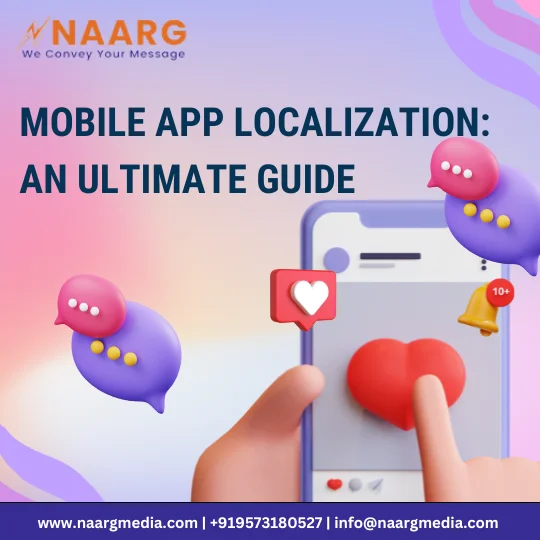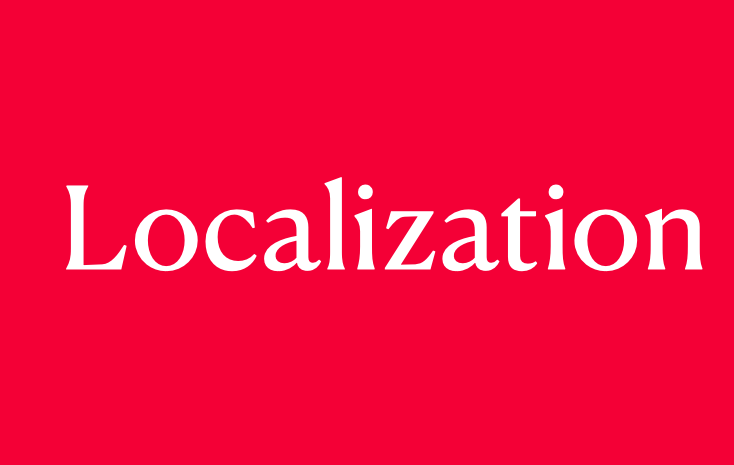You must have heard about the popular messaging app WhatsApp; it has become a global phenomenon. And all because of its crucial localization strategy. In India alone, WhatsApp has over 400 million users, and it is projected that it will reach 795.67 million users by 2025.
This messaging app supports several regional languages like Hindi, Bengali, and Tamil. The deep understanding of the local market has helped WhatsApp become the dominant platform in India.
Likewise, the mobile app market has become more competitive than ever. However, success in international markets isn’t merely about translating the app’s content into different languages.
It is all about tailoring the entire user experience to resonate with the cultural, linguistic, and technical nuances of each target market. This particular process is known as mobile app localization. Wondering what mobile app localization is?
Don’t worry, we will tell you everything about this key to unlock your app’s global potential. This blog will tell you the benefits of mobile app localization, its key components, and the best practices for successful mobile app localization.

What is Mobile App Localization?
When it comes to mobile app localization, is the process of adapting an app’s interface, content, and functionality to meet the specific needs of cultural, linguistic, and technical requirements of a global market.
Unlike simple translation, which focuses solely on converting text from one language to another, localization involves a holistic approach considering the entire user experience (UX).
Localization means not only translating the app’s text but also adjusting visual elements, date and time formats, and even color schemes to align with local preferences and expectations.
The sole purpose of mobile app localization is to make the app feel as though it was designed specifically for each market. Thereby enhancing user satisfaction, engagement, and ultimately the app’s success in the global market.
The Benefits of Mobile App Localization
The benefits of mobile app localization can significantly enhance the success of your app on a global scale. And it offers a myriad of benefits.
Here are some of the key benefits of app localization.
1. Increased Market Reach
Localizing your app can help you tap into new markets that would otherwise be inaccessible due to certain cultural adaptations and language barriers. This expanded market reach allows you to target users in different regions, significantly increasing your app’s potential user base and downloads.
2. Enhanced User Experience
When you give a well-localized app to your users, it feels native to them, making it easier and more enjoyable for them to use. This increases user experience because when users see content in their language, formatted according to their cultural norms, they are more likely to engage with the app and continue using it.
This gives positive word-of-mouth about your app and can lead to higher retention rates.
3. Competitive Advantage
We have a very crowded app market, and localization can set your app apart from competitors. By just catering to the specific needs of the local users, you can easily build a strong brand presence in international markets and position your apps as the preferred in those regions.
4. Increased Revenue
When you expand to new markets, it often means tapping into new revenue streams. So, localizing your app allows you to offer localized payment methods, pricing, and promotions.
Thus making it easier for users to make a purchase. Localized content can lead to increased in-app purchases, subscriptions, and overall revenue.
Key Components of Mobile App Localization
Mobile app localization requires a comprehensive approach that goes beyond mere translation.
Some of the key components that ensure your app resonates with the users across different markets are listed below.
1. Language Translation
One of the most fundamental aspects of localization is translating the app’s content into the target language(s). This language translation includes not just the user interface text but also error messages, notifications, and any other textual content.
For this, professional translation services are essential to capture the nuances and idioms of each language. Thus ensuring that the app feels natural to native speakers.
2. User Interface (UI) and User Experience (UX) Design
The app’s UX and UI must be adaptable to accommodate cultural contexts and different languages. It may involve resizing buttons, adjusting layouts, or even redesigning certain elements to fit longer or shorter text strings.
Additionally, your app should support bidirectional text for languages like Arabic and Hebrew. Because a well-localized UX/UI ensures that your users in different regions can navigate the app intuitively.
3. App Store Optimization (ASO) for Local Markets
App store optimization (ASO) is crucial for improving visibility in local markets. So, you need to localize your app’s listing on app stores (Google Play, Apple App Store, etc.). This localization includes translating the app title, description, and keywords.
An optimized ASO can enhance your app’s discoverability, thus leading to more downloads in the target market.
The Mobile App Localization Process
To localize an app is a multi-step process that involves careful planning, collaboration, and attention to detail. Listed below is a step-by-step guide to the mobile app localization process.
1. Market Research and Target Audience Analysis
The first and foremost step in the localization process is to conduct thorough market research to identify the languages and regions that offer the best expansion opportunities.
It involves analyzing user demographics, language needs, cultural preferences, and local competition. So, understanding your target audience helps tailor the localization efforts to meet their specific needs.
2. Planning and Resource Allocation
Once your target market is identified, it is essential to create a detailed localization plan. This planning and resource allocation plan outlines the scope of the project, timelines, budget, and the resources required.
It is also very crucial to assemble a team of localization experts, which includes cultural consultants, translators, developers, and quality assurance specialists.
3. Content Extraction and Translation
Now the next step is to extract all translatable content from your app, including UI text, notifications, and any other user-dating content. With the help of professional translators, this content is translated into the target languages.
Thus ensuring that it is both accurate and culturally relevant. For this translation process, translation management tools can help streamline the process by organizing and tracking the translation process.
4. Cultural Adaptation
The app’s content and design need to be culturally adapted to suit the preferences and norms of the target markets. And this goes beyond just translating the text. This involves changing images, colors, icons, and even app functionality to align with the local customs.
For example, if you are targeting a Middle Eastern audience, you might need to support right-to-left (RTL) text direction and also use culturally appropriate imagery.
5. App Store Optimization (ASO) and Marketing Localization
Once your app is fully localized, it is crucial to optimize its presence in app stores for the target markets. It involves localizing the app’s title, keywords, descriptions, and promotional materials.
The localized marketing campaigns include social media content, advertisements, and customer outreach and should be tailored to resonate with the local audiences.
6. Deployment and Monitoring
After successful localization, your localized app is deployed to the target markets. This mobile app localization process doesn’t end with the launch. Continuous monitoring is necessary to track user feedback, performance metrics, and any potential issues that arise.
The feedback loop helps refine the localization efforts and make necessary updates or improvements over time.
Best Practices for Successful Mobile App Localization
For seamless and effective mobile app localization, it is essential to follow best practices that can help avoid common pitfalls and maximize your app’s success in global markets. Some of the best practices for successful mobile app localization include the following:
1. Plan for Localization Early
You should plan for localization at an early stage. Always incorporate localization into the app development process from the very beginning. Planning for localization during the design and coding stages can avoid costly and time-consuming rework later on.
This approach is proactive and ensures that your app’s architecture is flexible enough to support cultural adaptations and multiple languages.
2. Focus on Cultural Relevance
When we talk about localization, it is more than just translation. It is all about making your app culturally relevant to users in different markets. This particularly means adapting images, colors, icons and even features to align with local preferences, customs, and expectations.
So, always conduct thorough research or consult with cultural experts to ensure your app resonates with your target audience.
3. Optimize App Store Listings
One of the essential practices is to localize your app store listings, which include the app title, description, and keywords. This will improve your app’s visibility and search rankings in local markets, leading to higher downloads.
Always make sure to use keywords that are relevant to the local audience and also consider regional preferences when selecting visuals.
4. Offer Localized Customer Support
Always provide customer support in the local languages of your target markets. Localized customer support includes translating FAQs, helping with documents, and providing support through local channels like email, chat, or phone.
So, offering localized support enhances user satisfaction and helps resolve issues quickly.
App localization services involve adapting a mobile application’s content, design, and functionality to meet the cultural, linguistic, and technical preferences of different target markets.
These services go beyond simple translation, ensuring that all elements of the app—such as text, images, user interface (UI), and user experience (UX) elements—are optimized for specific languages and regions.
Need a hand in localizing your project?
Feel free to contact us to learn more about our localization services.

